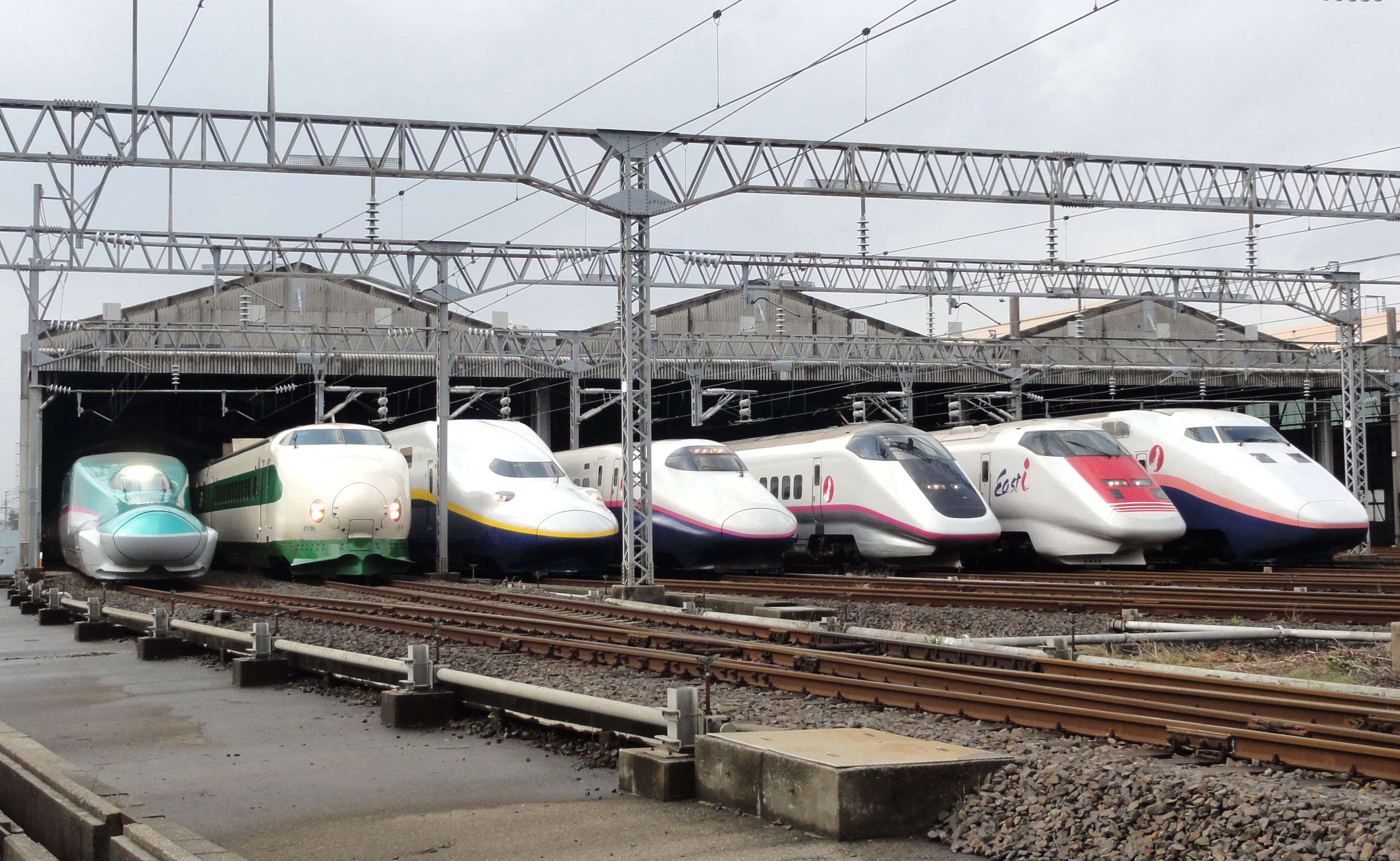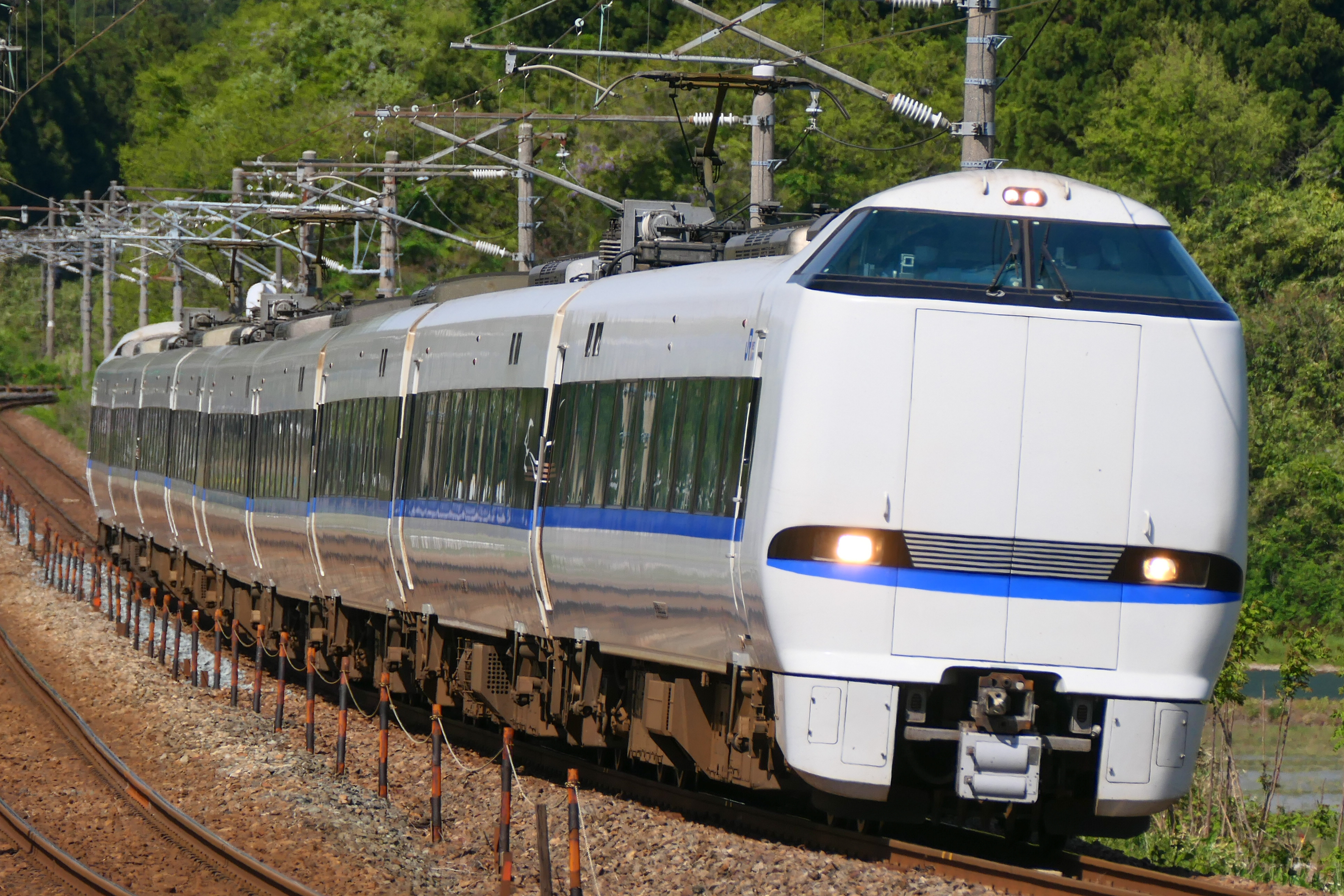|
Hakutaka
The is a high-speed ''shinkansen'' train service jointly operated by East Japan Railway Company (JR East) and West Japan Railway Company (JR West) between and on the Hokuriku Shinkansen line in Japan. The shinkansen service was introduced on 14 March 2015, but the name was first used for a limited express service operated by Japanese National Railways (JNR) from 1965 until 1982, and later by JR West and Hokuetsu Express between 1997 and March 2015. Service outline , 14 return ''Hakutaka'' services operate daily between and , with one additional return working daily between and Kanazawa. Trains operate at a maximum speed of . ''Hakutaka'' services stop at the following stations. Not all trains stop at stations marked with an asterisk. * * * * * * * * * * * * * * * * * * * * * * Rolling stock * E7 series 12-car sets based at Nagano Depot, since 14 March 2015 * W7 series 12-car sets based at Hakusan Depot, since 14 March 2015 ''Hakutaka'' services are operated us ... [...More Info...] [...Related Items...] OR: [Wikipedia] [Google] [Baidu] |
Hokuetsu Express Hokuhoku Line
The is a Japanese railway line in Niigata Prefecture that runs from Muikamachi in Minamiuonuma City to Saigata in Jōetsu City. It is the sole railway line operated by . Construction of the line first began in 1968 by the Japanese National Railways (JNR), and was initially referred to as the . However, the construction of the line was plagued by numerous delays, and was finally completed as a third sector line on 23 March 1997, including the Akakura Tunnel, the longest on a non-JR line. Unlike most other third sector company lines, the Hokuhoku Line made steady profits after its opening, as the former ''Hakutaka'' Limited Express train service, which travelled using the line, served as the principal link between the Tokyo metropolitan area and the Hokuriku region until the opening of the Hokuriku Shinkansen in 2015. The line's former maximum speed limit of allowed the ''Hakutaka'' to become the fastest narrow gauge train service in the country, matched only by the standa ... [...More Info...] [...Related Items...] OR: [Wikipedia] [Google] [Baidu] |
Hokuriku Shinkansen
The is a high-speed Shinkansen railway line jointly operated by East Japan Railway Company (JR East) and West Japan Railway Company (JR West), connecting Tokyo with in the Hokuriku region of Japan. The first section, between and in Nagano Prefecture, opened on 1 October 1997, originally called the (Takasaki is linked to Tokyo by the Jōetsu Shinkansen). The extension to in Toyama Prefecture and in Ishikawa Prefecture opened on 14 March 2015. Construction of a further section onward to and in Fukui Prefecture commenced in 2012, with scheduled opening in Spring 2024. The route of the final section to Shin-Osaka was decided on 20 December 2016 as the Osaka–Kyoto route, with construction expected to begin in 2030 and take 15 years. Train names and service patterns Since March 2015, services on the line are split into four types, with train names as listed below. Trains operate over the Joetsu and Tohoku Shinkansen tracks between Tokyo and Takasaki. * ''Kagayaki'': Toky ... [...More Info...] [...Related Items...] OR: [Wikipedia] [Google] [Baidu] |
Shinkansen
The , colloquially known in English as the bullet train, is a network of high-speed railway lines in Japan. Initially, it was built to connect distant Japanese regions with Tokyo, the capital, to aid economic growth and development. Beyond long-distance travel, some sections around the largest metropolitan areas are used as a commuter rail network. It is operated by five Japan Railways Group companies. Over the Shinkansen's 50-plus-year history, carrying over 10 billion passengers, there has been not a single passenger fatality or injury on board due to derailments or collisions. Starting with the Tokaido Shinkansen () in 1964, the network has expanded to currently consist of of lines with maximum speeds of , of Mini-Shinkansen lines with a maximum speed of , and of spur lines with Shinkansen services. The network presently links most major cities on the islands of Honshu and Kyushu, and Hakodate on northern island of Hokkaido, with an extension to Sapporo under constru ... [...More Info...] [...Related Items...] OR: [Wikipedia] [Google] [Baidu] |
E7 Series
The and Shinkansen are Japanese high-speed train types operated by East Japan Railway Company (JR East) and West Japan Railway Company (JR-West), respectively. They were jointly developed. The E7 series has operated since 15 March 2014. It also operates on the Jōetsu Shinkansen following the March 2019 timetable revision. The W7 series has operated on the Hokuriku Shinkansen since it was extended from to in March 2015. A total of eleven 12-car W7 series sets (132 vehicles) have been built. The first W7 series train was delivered in April 2014. Design Based on the earlier E2 series trains, the E7 series trains are designed with a "Japanese" theme inside and out, combining futuristic styling with traditional design elements overseen by industrial designer Ken Okuyama together with Kawasaki Heavy Industries. Externally, the roof is finished in a "sky blue" colour, and the bodysides are "ivory white" with "copper" and "sky blue" lining. The bodyside logos consist of a number ... [...More Info...] [...Related Items...] OR: [Wikipedia] [Google] [Baidu] |
W7 Series
The and Shinkansen are Japanese high-speed train types operated by East Japan Railway Company (JR East) and West Japan Railway Company (JR-West), respectively. They were jointly developed. The E7 series has operated since 15 March 2014. It also operates on the Jōetsu Shinkansen following the March 2019 timetable revision. The W7 series has operated on the Hokuriku Shinkansen since it was extended from to in March 2015. A total of eleven 12-car W7 series sets (132 vehicles) have been built. The first W7 series train was delivered in April 2014. Design Based on the earlier E2 series trains, the E7 series trains are designed with a "Japanese" theme inside and out, combining futuristic styling with traditional design elements overseen by industrial designer Ken Okuyama together with Kawasaki Heavy Industries. Externally, the roof is finished in a "sky blue" colour, and the bodysides are "ivory white" with "copper" and "sky blue" lining. The bodyside logos consist of a number ... [...More Info...] [...Related Items...] OR: [Wikipedia] [Google] [Baidu] |
Shinkansen
The , colloquially known in English as the bullet train, is a network of high-speed railway lines in Japan. Initially, it was built to connect distant Japanese regions with Tokyo, the capital, to aid economic growth and development. Beyond long-distance travel, some sections around the largest metropolitan areas are used as a commuter rail network. It is operated by five Japan Railways Group companies. Over the Shinkansen's 50-plus-year history, carrying over 10 billion passengers, there has been not a single passenger fatality or injury on board due to derailments or collisions. Starting with the Tokaido Shinkansen () in 1964, the network has expanded to currently consist of of lines with maximum speeds of , of Mini-Shinkansen lines with a maximum speed of , and of spur lines with Shinkansen services. The network presently links most major cities on the islands of Honshu and Kyushu, and Hakodate on northern island of Hokkaido, with an extension to Sapporo under constru ... [...More Info...] [...Related Items...] OR: [Wikipedia] [Google] [Baidu] |
683 Series
The is a dual-voltage electric multiple unit (EMU) train type operated by West Japan Railway Company (JR-West) and Hokuetsu Express on limited express services in Japan since 2001. Variants * 683-0 series (''Thunderbird'') * 683-1000 series (''Thunderbird'') * 683-2000 series (''Thunderbird'', former '' Shirasagi'') * 683-3000 series (''Thunderbird'', former ''Shirasagi'') * 683-4000 series (''Thunderbird'') * 683-5000 series (''Thunderbird'') * 683-8000 series (''Shirasagi'', former Hokuetsu Express ''Hakutaka'') File:JR West 683 series EMU 421.JPG, 683-4000 series Operations JR-West * ''Thunderbird'' * '' Shirasagi'' * ''Biwako Express'' * ''Ohayō Express'' * ''Oyasumi Express'' * ''Dinostar'' (from 14 March 2015) * '' Noto Kagaribi'' (from 14 March 2015) * ''Kuroshio'' (from 13 March 2015) Hokuetsu Express * ''Hakutaka'' (until 12 March 2015) JR Central * ''Home Liner Ōgaki'' rapid service (until 13 March 2015) * ''Home Liner Sekigahara'' rapid service (until 13 Marc ... [...More Info...] [...Related Items...] OR: [Wikipedia] [Google] [Baidu] |
East Japan Railway Company
The is a major passenger railway company in Japan and is the largest of the seven Japan Railways Group companies. The company name is officially abbreviated as JR-EAST or JR East in English, and as in Japanese. The company's headquarters are in Yoyogi, Shibuya, Tokyo, and next to the Shinjuku Station. It is listed in the Tokyo Stock Exchange (it formerly had secondary listings in the Nagoya Stock Exchange, Nagoya and Osaka Exchange, Osaka stock exchanges), is a constituent of the TOPIX Large70 index, and is also one of the three only Japan Railways Group constituents of the Nikkei 225 index, the other being Central Japan Railway Company, JR Central and West Japan Railway Company, JR West. History JR East was incorporated on 1 April 1987 after being spun off from the government-run Japanese National Railways (JNR). The spin-off was nominally "privatization", as the company was actually a wholly owned subsidiary of the government-owned Japanese National Railway Settlement ... [...More Info...] [...Related Items...] OR: [Wikipedia] [Google] [Baidu] |
JR East
The is a major passenger railway company in Japan and is the largest of the seven Japan Railways Group companies. The company name is officially abbreviated as JR-EAST or JR East in English, and as in Japanese. The company's headquarters are in Yoyogi, Shibuya, Tokyo, and next to the Shinjuku Station. It is listed in the Tokyo Stock Exchange (it formerly had secondary listings in the Nagoya and Osaka stock exchanges), is a constituent of the TOPIX Large70 index, and is also one of the three only Japan Railways Group constituents of the Nikkei 225 index, the other being JR Central and JR West. History JR East was incorporated on 1 April 1987 after being spun off from the government-run Japanese National Railways (JNR). The spin-off was nominally "privatization", as the company was actually a wholly owned subsidiary of the government-owned JNR Settlement Corporation for several years, and was not completely sold to the public until 2002. Following the breakup, JR East ... [...More Info...] [...Related Items...] OR: [Wikipedia] [Google] [Baidu] |
List Of Named Passenger Trains Of Japan
This article contains lists of named passenger trains in Japan. Shinkansen (bullet trains) Daytime trains Limited express (partial list) Express Rapid Night trains Limited express Express Rapid See also * Rail transport in Japan References * JR Timetable, December 2008 * * {{reflist List of named passenger trains of Japan Japan Japan ( ja, 日本, or , and formally , ''Nihonkoku'') is an island country in East Asia. It is situated in the northwest Pacific Ocean, and is bordered on the west by the Sea of Japan, while extending from the Sea of Okhotsk in the north ... Named passenger trains ... [...More Info...] [...Related Items...] OR: [Wikipedia] [Google] [Baidu] |
Railway Services Introduced In 2015
Rail transport (also known as train transport) is a means of transport that transfers passengers and goods on wheeled vehicles running on rails, which are incorporated in tracks. In contrast to road transport, where the vehicles run on a prepared flat surface, rail vehicles (rolling stock) are directionally guided by the tracks on which they run. Tracks usually consist of steel rails, installed on sleepers (ties) set in ballast, on which the rolling stock, usually fitted with metal wheels, moves. Other variations are also possible, such as "slab track", in which the rails are fastened to a concrete foundation resting on a prepared subsurface. Rolling stock in a rail transport system generally encounters lower frictional resistance than rubber-tyred road vehicles, so passenger and freight cars (carriages and wagons) can be coupled into longer trains. The operation is carried out by a railway company, providing transport between train stations or freight customer facili ... [...More Info...] [...Related Items...] OR: [Wikipedia] [Google] [Baidu] |






